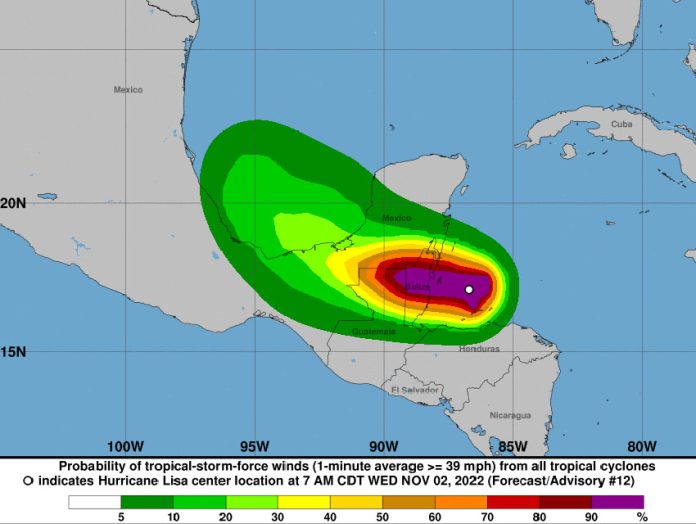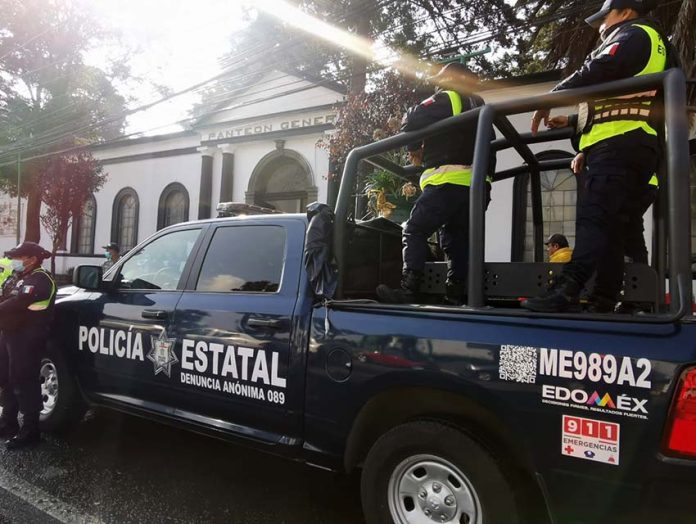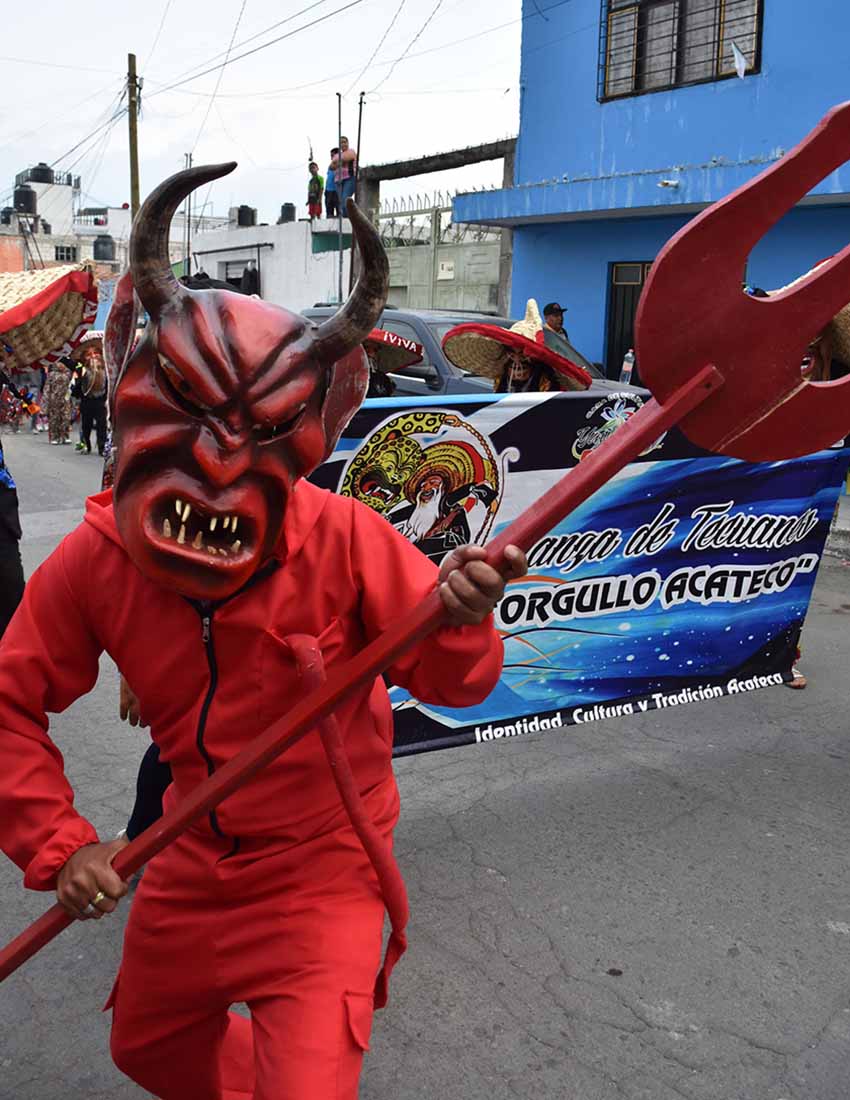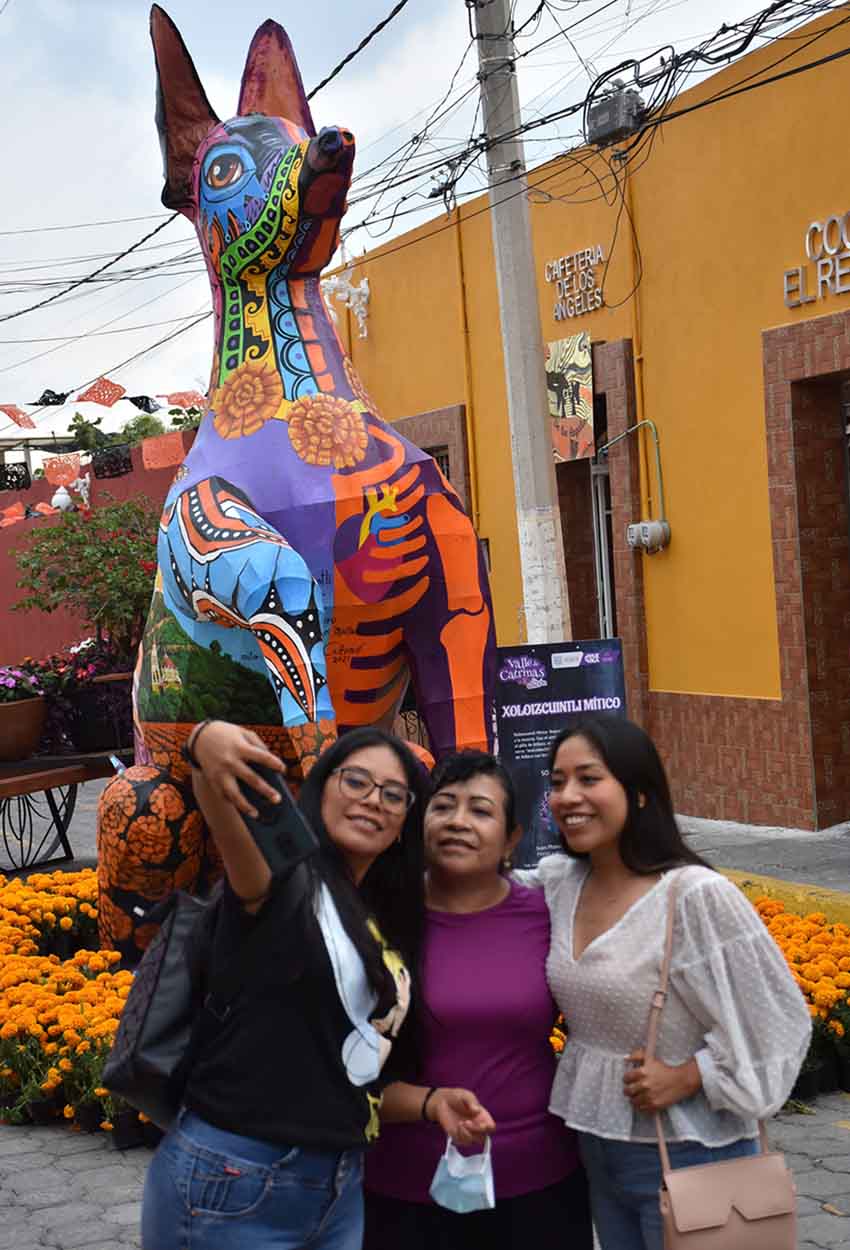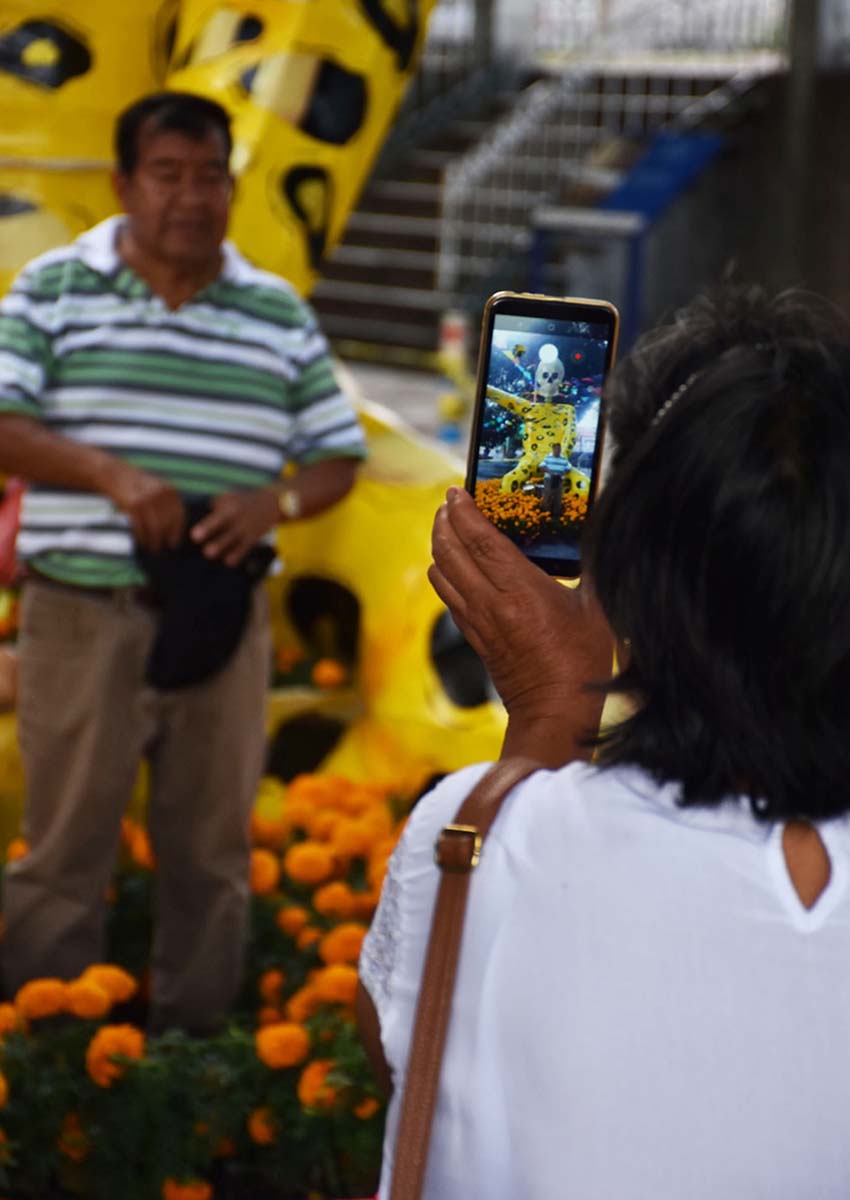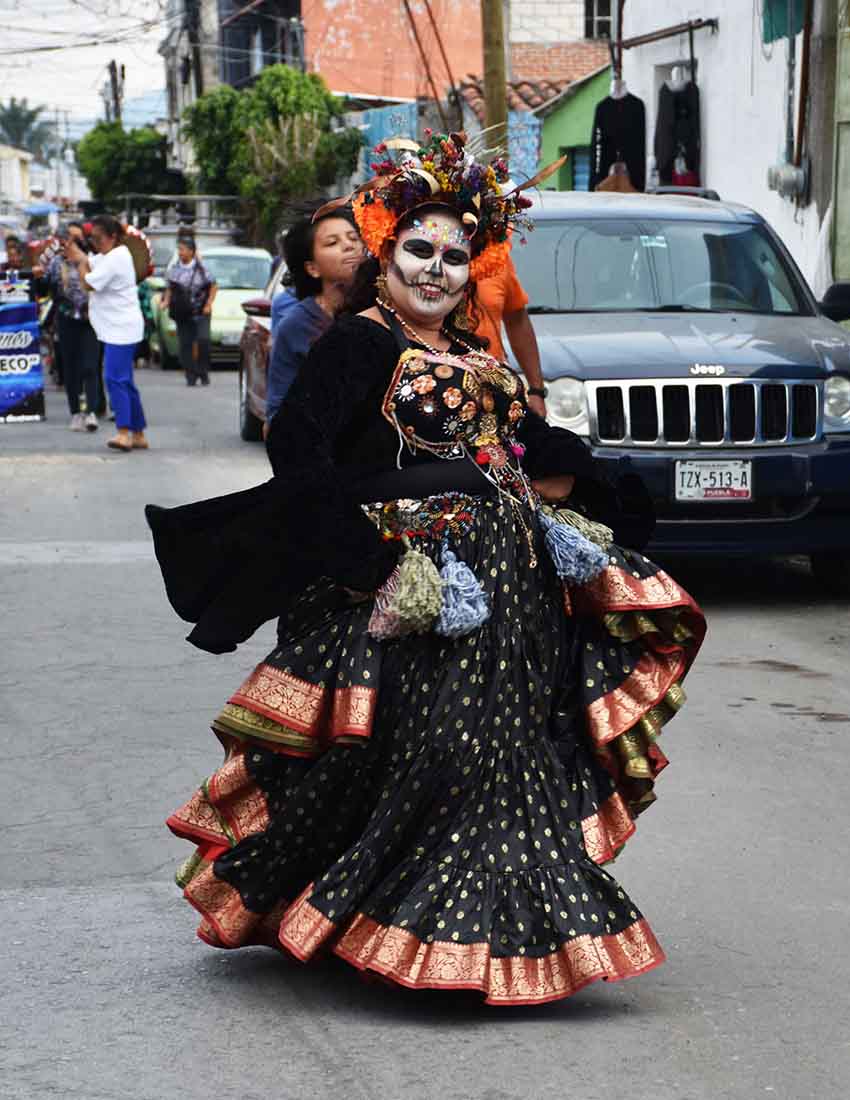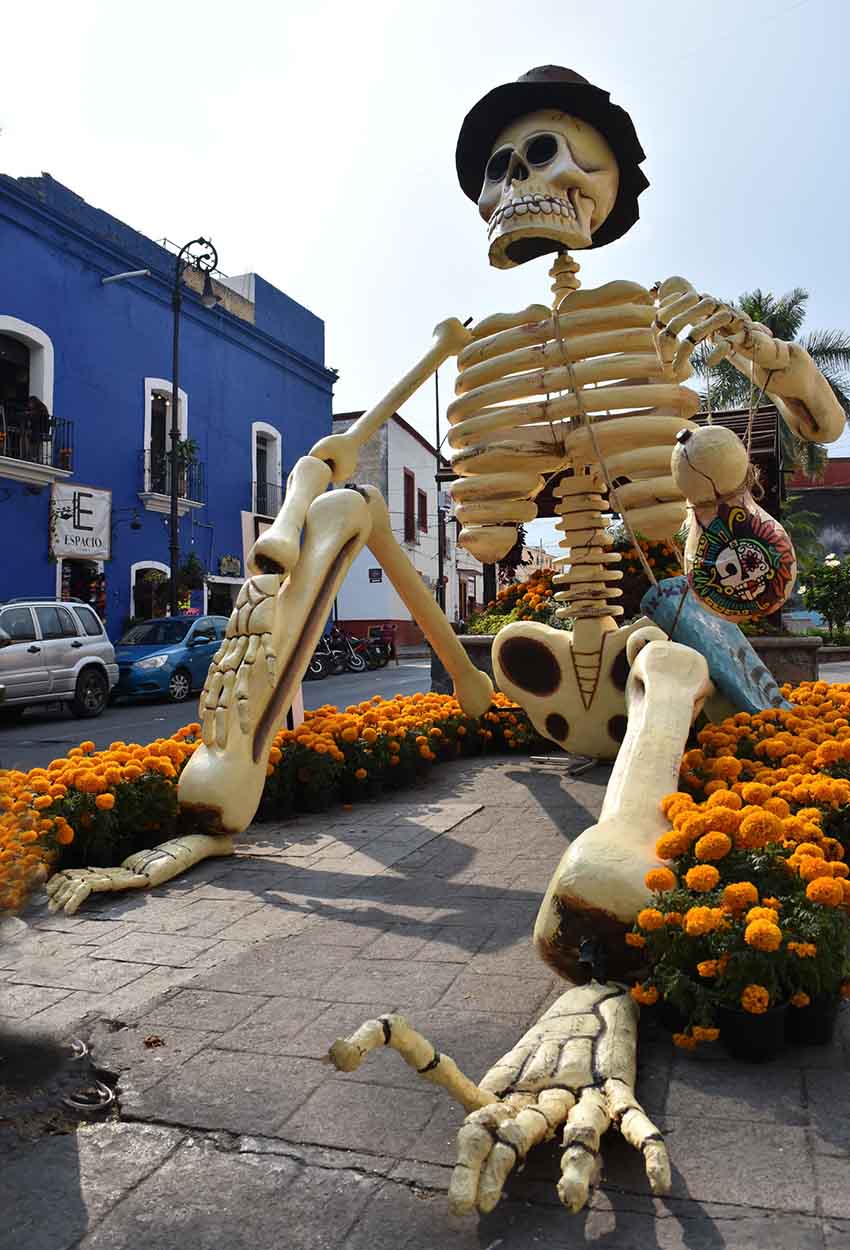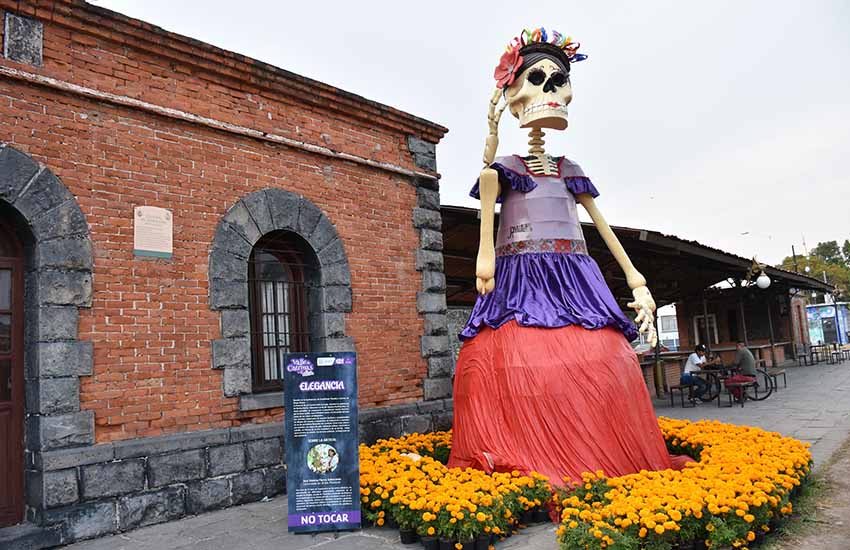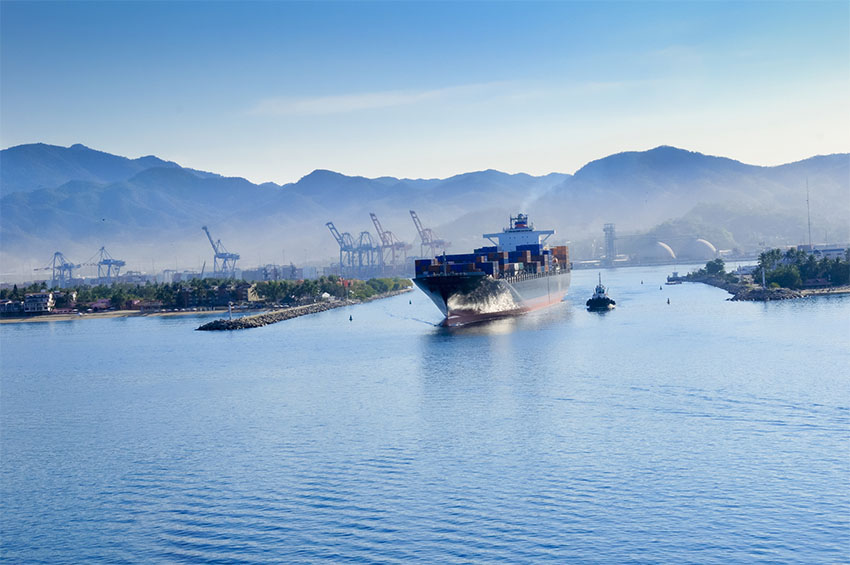A hurricane warning is in effect for southern Quintana Roo as Hurricane Lisa looms off the coast of Belize.
Lisa – a Category 1 storm with maximum sustained winds of 130 kilometers per hour – was 90 kilometers east-southeast of Belize City at 10 a.m. Central Time, the United States National Hurricane Center (NHC) said in an advisory.
A hurricane warning is in effect for the coast of Belize and the coast of Quintana Roo between state capital Chetumal and Puerto Costa Maya, a cruise ship port near the village of Mahahual.
“A Hurricane Warning means that hurricane conditions are expected somewhere within the warning area,” the NHC said. “Preparations to protect life and property should be rushed to completion.”
A tropical storm warning is also in effect for the Quintana Roo coast between Puerto Costa Maya and Punta Allen, a village south of Tulum.
The NHC said that Lisa was moving toward the west at approximately 22 km/h at 10 a.m. CDT. “On the forecast track, the center of Lisa will make landfall in Belize later today and then cross northern Guatemala and move into southeastern Mexico by Thursday,” the Florida-based center said.
“… Some strengthening is forecast before landfall. Rapid weakening will occur after the center of Lisa moves inland.”
The NHC said that Lisa could bring up to 10 inches (25 centimeters) of rain to Belize, northern Guatemala, southern Quintana Roo, southern Campeche, Tabasco, northern Chiapas and far eastern Veracruz. Up to six inches (15cm) of rain is forecast for areas including south-central Campeche.
“This rainfall could lead to flash flooding conditions, primarily across Belize into northern Guatemala, the far southeast portion of the Yucatán peninsula, the southern portion of the Mexican state of Campeche, Tabasco, northern Chiapas and far eastern Veracruz,” the NHC said.
It also warned that a storm surge will likely raise water levels by as much as 4 to 7 feet (between 1.2 and 2.1 meters) above normal tide levels “near and to the north of where the center of Lisa crosses the coast of Belize and extreme southeastern portions of the Yucatán Peninsula.”
Authorities have set up shelters in the southern Quintana Roo municipalities of Othón P. Blanco (which includes Chetumal), Bacalar and Felipe Carrillo Puerto. Quintana Roo Governor Mara Lezama advised residents of that state to take precautions and follow the advice of authorities.
Lisa is the 12th named storm and the sixth hurricane of the 2022 Atlantic Hurricane season. The season began June 1 and runs through November 30.
Mexico News Daily
